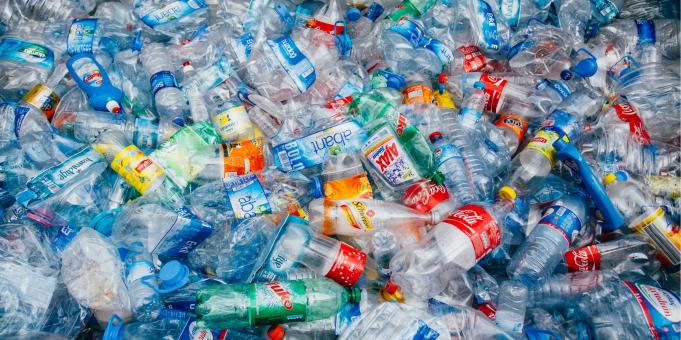Plastic companies keep investing hundreds of millions of dollars into so-called “chemical recycling.”1
So … is chemical recycling the magic fix to plastic waste? Or is it a mirage? Here are the facts.
Only 5% of plastics actually get recycled — that is, turned into new, usable material.2
But that’s not what chemical recycling does. Instead, it breaks down plastic back into oil and gas to eventually be burned, releasing toxic pollutants into the air, including some known carcinogens.3
Very little recycled material is produced at chemical recycling facilities — only about 1% to 14% of the plastic material sent to chemical recycling plants is actually processed into new products. Instead, that plastic is almost always being burned for energy and fuel.4
Not only does chemical recycling not accomplish much recycling, it produces morepollution than the original plastic did. Chemical recycling can be 10 to 100 times worse for the environment than virgin plastic production.5
We need real solutions to the plastic waste crisis, not burning plastic and calling it recycling. But unfortunately, chemical recycling is gaining ground.
Bills to reclassify chemical recycling as manufacturing — thus allowing chemical recyclers to skirt more stringent regulations — have passed in 24 states.6
There are currently 11 chemical recycling plants operating in the U.S., and the American Chemistry Council has advocated for building a total of 150 chemical recycling plants.7
At PIRG, we’re educating the public about chemical recycling. More importantly, we’re working to reduce plastic pollution by reducing our use of plastic products, especially those wasteful single-use items we just don’t need.
With a problem as big as plastic waste, we need to tackle it from all sides. Urge corporations to reduce their plastic waste and switch to sustainable alternatives. Phase out the worst single-use plastics. Hold producers accountable for the waste their products become. And keep microplastics out of our waterways.
Chemical recycling is a distraction from real solutions to plastic waste, diverting money and attention away from projects that would create real solutions.
————–
1. Megan Quinn, “ExxonMobil, other chemical recyclers announce latest investments and partnerships,” Waste Dive, November 26, 2024.
2. Nina Lakhani, “Only 5% of plastic waste generated by US last year was recycled, report says,” The Guardian, October 24, 2022.
3. Matt Casale, Celeste Meiffren-Swango and James Horrox, ““Chemical recycling”: What you need to know,” U.S. PIRG, March 15, 2023.
4. “New report shines light on the problems with ‘chemical recycling‘,” U.S. PIRG, January 26, 2023.
5. Matt Casale, Celeste Meiffren-Swango and James Horrox, ““Chemical recycling”: What you need to know,” U.S. PIRG, March 15, 2023.
6. Schuyler Mitchell, “Garbage in, toxics out,” The Intercept, September 28, 2023.
7. Elizabeth Claire Alberts, “Chemical recycling of plastic not so fantastic, report finds,” November 24, 2023.




Recently on Twitter